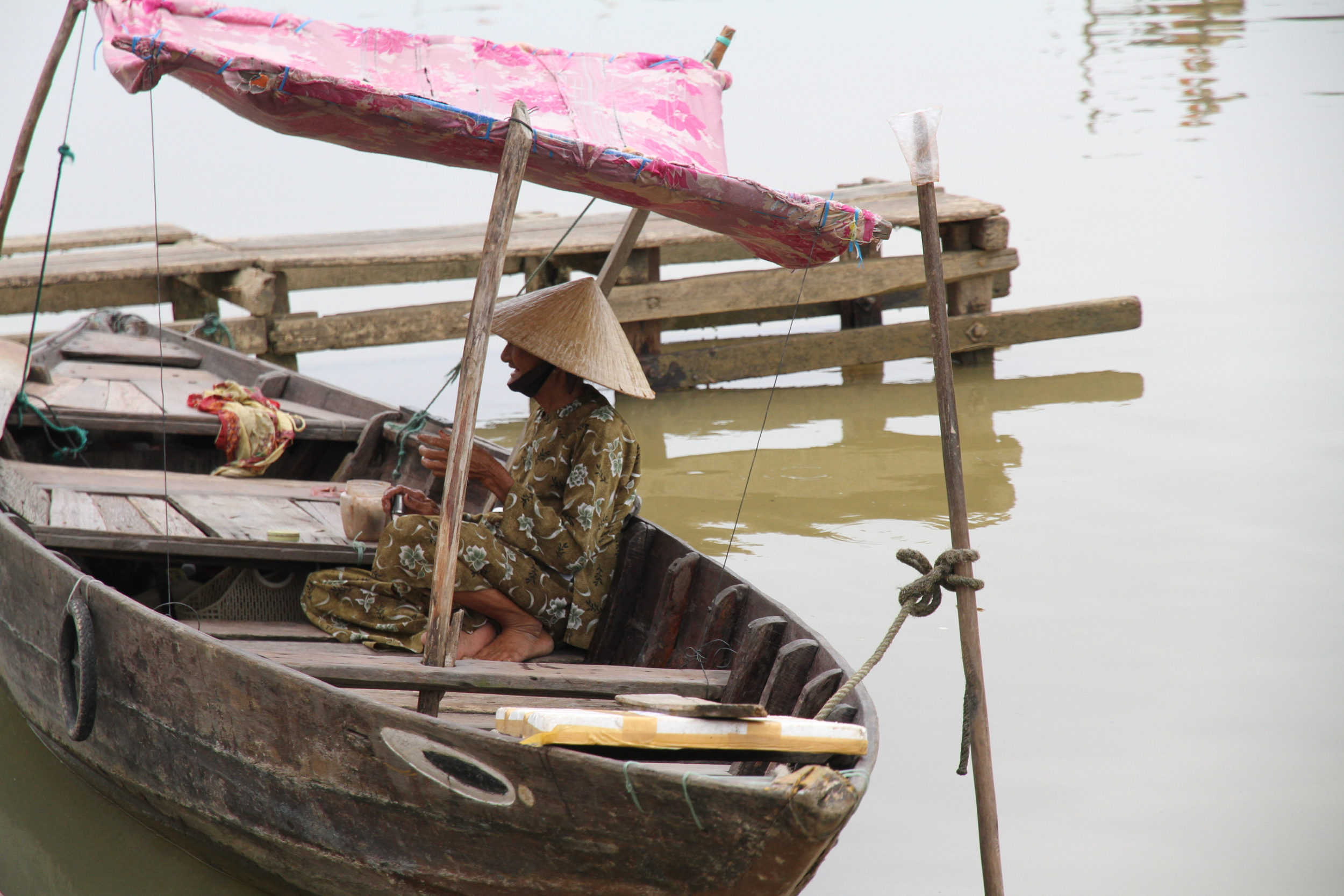Vietnam Underground

SUITED UP IN our park-issued military fatigues, we looked like lost soldiers from the Vietnam war (or as they call it here, the American war).
Weaving through the crowd outside, we were met with quizzical looks as we headed for the mouth of Paradise Cave, the natural coolness slicing right through the sticky jungle heat.
My crush in camo.
LESS THAN 48 HOURS AGO, we were on a sleeper train sneaking south through the night from Hanoi. Our six-passenger berth had eight people crammed inside before take off. After a lot of charades and hand gestures an elderly woman in sunglasses and a surgical mask and her soft-spoken daughter realized they were in the wrong section and walked away waving sweetly, just as a mouse-sized cockroach scuttled in.
The vermin and the knock-around ride kept me up through the night, but I knew getting to Dong Hoi, the capital city of the Quang Binh Province, and our home base for exploring the record-setting cave systems of Phong Nha-Ke Bang wouldn’t be simple.
Two too many.
PHONG NHA-KE BANG NATIONAL PARK has the oldest karst mountains in all of Asia, at 400 million years old. The entrance to Paradise Cave (Thien Duong) and the first kilometer therein has been open to visitors since 2010. But as luck would have it, we got first dibs on a virgin excursion past the tourist boardwalk. Only 23 others had explored the area before my group was allowed inside.
Every cavern, corner and crystalline formation was new and alien. We walked into another world without ever leaving the Earth. Symphony-sized chambers were lined with rock formations resembling pagodas, jellyfish, and broccoli. Strange milky galaxies formed on the ground, white arms swirling away from nubile stalagmites, growing slower than a human child. An hour later, we were in a subterranean funhouse, zig-zagging through a fragile forest made out of stone pillars, still dripping with the mineral deposits of their creation.
With ceiling heights exceeding 100 meters, at some points my headlamp could illuminate nothing but the sandy cave floor in under my feet. Looking up, the effect was dizzying as the beam of light attached to my forehead was absorbed into the pitch.
Some areas were impassable without a swim, but the survey teams before us left kayaks, so we were pulled through the water by our guides, swimming with one hand on the boat. As the cave above closed in, we dipped back in the boat, lower, and lower, and lower, until we were nearly flat, noses scraping the cold ceiling.
Hours in, I heard a cry of joy and lifted my eyes from my feet to see sunlight far ahead.
Breaking through the stale, darkness of our path were glittering beams, pouring down through a tear in the jungle above. A stony cathedral in the distance was filled with light, and stacked below were boulders, rubbed smooth by gushing water.
Caution paramount, we slowly descended to the cavern floor and situated ourselves on some dry rocks to snack on white rice with chicken and sesame seeds. We gazed up at bats darting out into the sunlight to snatch bugs and dip back into the darkness. It was lunch time above and below.
PARADISE CAVE is in the general vicinity of the lung-like cave system of Hang Son Doong - the world’s largest, by far. Son Doong was not discovered until 1990, and Paradise Cave was only discovered 15 years later. It’s hard to believe that in such a short window, the locals around Phong Nha had their lives changed by discovery, and their focus shifted deep, deep underground.
Somehow Vietnam from below is just as impressive as Vietnam from above.
———-
VERDICT: Mostly Harmless - unless you’re afraid of the dark…
Cliff side in Phong Nha-Ke Bang National Park, scarred by bomb after bomb aiming for Victory Road below. This area saw a lot of action during the Vietnam War, because the Viet Cong took advantage of the caves and thick jungle as natural cover.
LINKS:
Paradise Cave: Massive tourist cave in Phong Nha-Ke Bang National Park in Vietnam.
Hanoi, Vietnam: Vietnam’s capital city.
Dong Hoi, Vietnam: Port city in central Vietnam. Not often visited, it is a great jumping-off point to explore Phong Nha-Ke Bang National Park.
Phong Nha-Ke Bang National Park: UNESCO World Heritage Site since 2003, holds 400-million-year-old karst systems and the world’s largest cave.
Hang Son Doong: Discovered in Phong Nha-Ke Bang National Park in 2009, it is the world’s largest cave.








